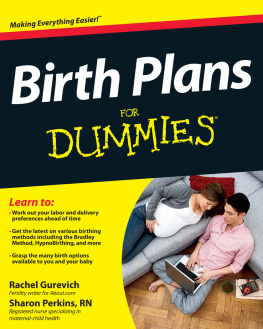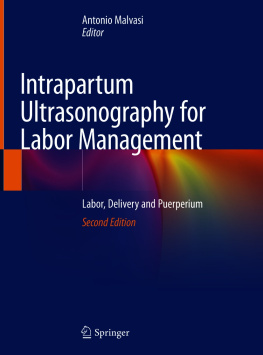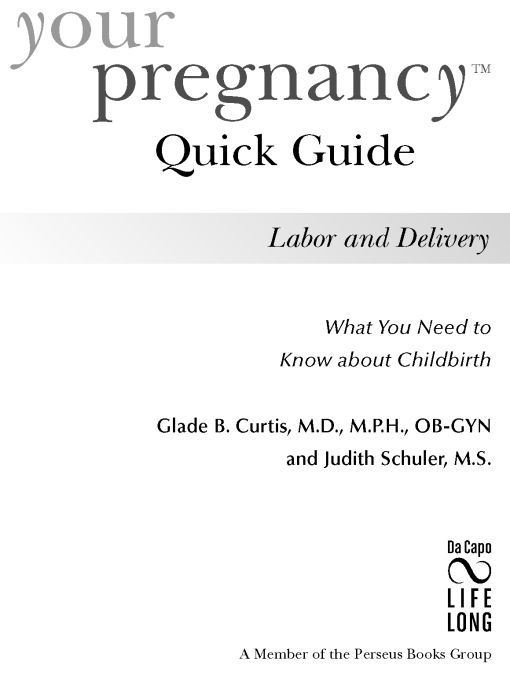Table of Contents
One of the greatest concerns pregnant women have is labor and delivery. It is unique, unlike any experience you have ever had before. You may be a little nervous about whats going to happen. Thats natural. But be positivethis is a wonderful miracle for you and your partner.
You probably have lots of questions and concerns. Work with your doctor to make your labor and delivery a good experience. Learn what you need to know and to do to be preparedask about what will happen, the medications you might be offered, what prompts your doctor to do a C-section. Ask your doctor to tell you what you can do to have a healthy pregnancy. Discuss any concerns you may have. Below are some things you may want to consider as you progress through your pregnancy.
Become informed about pregnancy and the birth experience. Knowledge is power. When you understand what can and will occur during labor and delivery, you may be able to relax more. Read our other pregnancy books, discuss questions and concerns with your doctor and share information and your knowledge with your partner.
The relationships you have with your doctor and other members of your healthcare team are very important. Be an active member of the team by following medical suggestions. Expect your medical team to work hard for you. Each of you should support the other.
Being able to help make decisions about labor and delivery, including birth positions, pain-relief methods and your partners level of participation in labor and delivery, helps you feel more in control. Discuss questions and various situations with your doctor at prenatal appointments.
The best advice we can give you before your labor begins is to relax. No one knows whats going to happen. Even medical professionals can be surprised by what occurs. Women have been having babies for a very long time, so youre not the first! Before you know it, youll be holding the baby youve been waiting so long to meet. You may even say, That wasnt so bad!
Note: Throughout the book, you will find boxes titled What Can I Do? How Can I Help? for your partner. This is a time many expectant dads fear. They want to help but dont know how. Few know how they will handle the experience of labor and childbirth. Many men worry about their partner and how this whole situation will change their couple relationship. We offer tips, suggestions and ideas to help involve your partner more in this wondrous time you will share.
Part I: Getting Ready before Labor Begins
Preparing for Babys Birth
You may be feeling a little nervous about the birth. You might be afraid you wont know when its time to call the doctor or go to the hospital.
Dont hesitate to talk to your doctor about it at one of your visits. He or she will tell you what signs to watch for.
In prenatal classes, you should also learn to recognize the signs of labor and when you should call your doctor or go to the hospital.
Your bag of waters may break before you go into labor. In most cases, youll notice this as a gush of water followed by a steady leaking. (See page 66.)
During the last few weeks of pregnancy, have your suitcase packed and ready to go. See the discussion beginning on page 28 for some helpful suggestions. Youll have things you want at the hospital.
Have insurance papers filled out and available.
If you can, tour the hospital facilities a few weeks before your due date. Find out where to go and what happens when you get there.
Talk with your partner about the best ways to reach him if you think you are in labor.
Ask your doctor what you should do if you think youre in labor. Is it best to call the office? Should you go directly to the hospital? Should you call the answering service? By knowing what to do and when to do it, youll be able to relax a little and not worry about the beginning of labor and delivery.
It may be helpful and save time if you register at the hospital a few weeks before your due date. You can get forms at your doctors office or from the hospital. It helps to do this before you go to the hospital in labor because you may be in a hurry and concerned with other things.
You should know certain facts, including the following:
~ your blood type and Rh-factor
~ when your last period was and what your due date is
~ details of any past pregnancies, including complications
~ your doctors name
~ your pediatricians name
Signs that your labor may be about to begin include:
~ increase of Braxton-Hicks contractions (see page 4)
~ feeling the baby drop lower into your pelvis (see page 68)
~ weight loss or a break in weight gain
~ increased pressure in the pelvis and rectum
~ changes in vaginal discharge
~ diarrhea
Tips for the Expectant Dad
What Can I Do? How Can I Help?
In the weeks before babys birth, help your partner fill out all the forms she will be givenhospital forms, insurance forms and any other forms she receives. Its easier to fill them out together so you can each provide necessary personal data.
Keep Your Options Open during Labor and Delivery
When planning for your labor and delivery, think about the method(s) you may use to get through the process.
Will you have epidural anesthesia?
Are you going to attempt a drug-free delivery?
Will you need an episiotomy?
Every woman is different, and every labor is different. Its difficult to anticipate what will happen and what you will need during labor and delivery for pain relief.
Its impossible to know how long labor will last3 hours or 20 hours.
Make a flexible plan.
Understand whats available and what options you can choose during labor.
During the last 2 months of your pregnancy, discuss these concerns with your doctor and become familiar with his or her philosophy about labor.
Know what can be provided for you at the hospital youve chosen. For example, some medications may not be available in your area or a pain-relief method may not be used at the hospital you choose.
Tips for the Expectant Dad
What Can I Do? How Can I Help?
Ask your partner to involve you in her plans for labor and delivery. Go to prenatal visits with her so the two of you can each ask the doctor questions about what will happen before, during and after labor and delivery.
Braxton-Hicks Contractions and False Labor
Braxton-Hicks contractions are painless, nonrhythmical contractions you may be able to feel when you place your hand on your abdomen. These contractions often begin early in pregnancy and are felt at irregular intervals. They may increase in number and strength when the uterus is massaged. They are not positive signs of true labor.
False labor often occurs before true labor begins. False-labor contractions can be painful and may feel like real labor to you. In most instances, false-labor contractions are irregular. They are usually of short duration (less than 45 seconds). Discomfort may occur in various parts of your body, such as the groin, lower abdomen or back.











